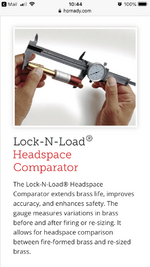- Messages
- 66
- Reactions
- 42
For hunting loads is there a downside to necksizing only? Currently, I only necksize my brass that is fired only from my gun. It seems to me I don't have to run the risk of a stuck case while full length resizing. I understand also that neck sizing also improves accuracy and minimizes the need for case trimming. I'd appreciate thoughts or concerns.












